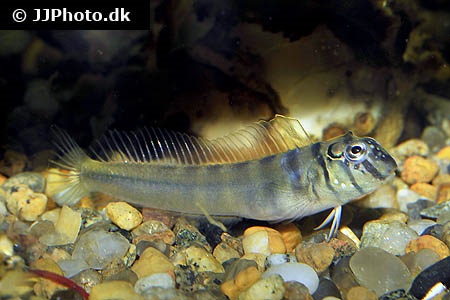Omobranchus zebra


| Latin name | Omobranchus zebra - (Bleeker, 1868) |
|---|---|
| Local name | Zebra blenny |
| Family | Blenniidae - Omobranchus |
| Origin | East Indian Ocean, Australia, Indonesia, Central/West Pacific |
| Max length | 6 cm (2.4") |
| Minimum volume |
150 l (40 gal) |
|---|---|
| Hardiness |
Average |
| Suitable for aquarium |
Suitable for special aquariums |
| Reef safe |
Always reef safe |
| Aggressiveness | Aggressive towards other species |
| Recommended |
Small crustaceans (Krill, mysis, artemia...) Zooplankton (Cyclops, pods...) |
|---|
These fish live normally in brackish water and must therefore be kept at a lower salinity level than is normal in a reef aquarium.
This species can be extremely aggressive towards other fish.
Be careful when keeping these fish together with peaceful or docile species. Regular feeding, plenty of hiding places and a lot of space can alleviate aggressive behavior to some degree.
This species can be bred in captivity, one can therefore consider asking your local fish store for a captive bred specimen.
There are many differences within the Toothcomb Blennies family, some eat algae whilst others eat zooplankton. There are many families of Blennies, this is merely one of them.
What they have in common are their oblong shape and long dorsal fin. Some species have small "legs" used to move around the bottom.
These Blennies do not normally get very big and are therefore a good choice for both small and large aquaria. They are not often very colorful, but many have a fun personality which many aquarists fall for.
The species of the families Aspidontus and Plagiotremus imitate Cleaner Wrasses and can therefore be difficult to identify.
| Aquarium trade | No |
|---|---|
| Distribution | Indo-West Pacific: India, Malaysia, Indonesia (Ref. 7050), Singapore and Philippines (Ref. 1548). |
| English common names |
Zebra blenny |
Jeff Kurtz. 2007. Combtooth Blennies: Bewitching Bottom Dwellers - Tropical Fish Hobbyist - (English)
Scott W. Michael. Reef Aquarium Fishes: 500+ Essential-to-know Species - TFH Publications / Microcosm Ltd. - (English)
Bob Fenner. The True/Combtooth Blennies, Family Blenniidae - Wet Web Media - (English)
Bob Fenner. Blennioids: Blennies and Blenny-Like Fishes - Wet Web Media - (English)

